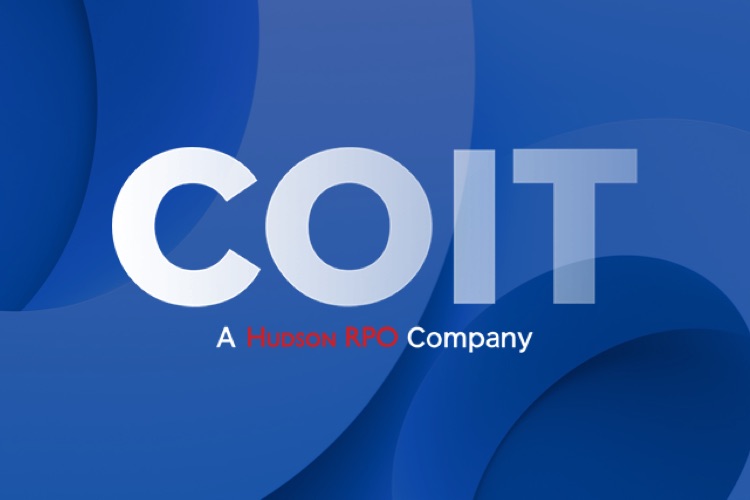We all want to be paid fairly for the work that we do and the value that we create. But with compensation long shrouded in mystery, it can be deflating or surprising to candidates and employees when they feel they are not being adequately compensated at different levels in their careers.
Pay transparency can help to overcome these feelings and engage candidates and employees more successfully in the long-term. With improved trust, morale, productivity and elevated business outcomes, pay transparency offers employers many advantages. Approaching pay transparency thoughtfully, you can structure pay practices to attract and retain a stronger workforce that keeps your company ahead.
At Coit Group, we view pay transparency as a key driver of optimal business performance. How should you approach pay transparency, and what are the benefits to your workforce and business?
Read on for tips and insights from talent leaders to consider as you define your approach with your existing team and new hires. And of course, we at Coit are here to help you. Contact us to find out what’s proven successful for teams and organizations similar in size and structure to your own.
Adam G Hopewell – Head of Global Talent at Behavox

For many organizations historically pay transparency has only provided value if the variations in pay were directly linked to time, productivity, or measured impact. It’s also worth noting that pay transparency is not really a binary concept – there are different levels, and except perhaps in the Nordics, it’s still in the early stages as a concept globally. In the currently most prevalent paradigm for Talent Acquisition companies compete against each other, themselves, and talent. Pay transparency is thus seen as a potential threat, as it brings into the light hidden key variables that organizations leverage to ‘beat’ their talent competition, increase productivity ratios, and control pay rate inflation.
Mack R. Moser – Talent Manager at Digi-Key Electronics

Pay transparency has a deep and far-reaching impact on an organization. While in some corporate cultures, it can lead to greater morale and job satisfaction while reducing turnover, in others it can have quite an adverse effect in those same areas.
Before bringing the pay transparency conversation to the C-suite take time to understand your company’s culture. Does pay transparency align with your corporate and people strategies? What organizationally is already in play that may support or conflict with effective implementation? How would pay transparency need to be structured to reap intended business objectives? Clear the way by first addressing those items and priming the corporate culture for adoption and implementation. Bring in the right stakeholders, partners, and change managers, including leaders from multiple levels around the business.
Pay transparency allows for job postings to include compensation transparency leading to better communication between candidates, hiring managers, and talent acquisition, building trust, satisfaction, and engagement throughout both the hiring and onboarding processes. This also enhances the efficiency of the hiring process by allowing candidates to know the compensation range before applying. In this way, candidates whose compensation expectations don’t align screen themselves out before even applying, allowing talent acquisition to spend less time screening and more time focusing on high-quality candidates who are more likely to accept a potential offer. In turn, new hires strengthen the corporate culture by entering the organization feeling that they are being treated fairly and management can be trusted, leading to better morale, performance, and retention.
Ashley Caruso Swanson – Director, Global Talent at Myers-Holum

The ongoing movement of pay transparency harnesses a proactive company culture and affords employees to self-advocate as the compensation topic is no longer uncomfortable. Such employee-centric initiatives create a true open-door policy, level the playing field of pay equity, and drive talent to deliver optimal results knowing how their pay should align based on performance, achievements, and milestones. Now more than ever, there are an unprecedented amount of remote/hybrid opportunities just a click away with many companies who have adopted pay transparency; As talent is aware of their value, employers who contest this movement could find themselves combating higher attrition rates or confined to reactive mode when attempting to salvage resignations.
Tad Davis – Director of Talent Acquisition at Shine Solar

If employees are motivated, retention takes care of itself. For me, transparency is the best policy for everything. We expect employees to be open and honest with us. Why would it be any different for us with them? Our people deserve to know what they will be working for/towards. Culture is everything, and you cannot have a great culture without retention. This is why mutual transparency is key in any organization that has great culture.
Derrick Gellidon – Head of People & Talent at Kikoff

“The first step in all employee journeys is likely taken alongside a People or Talent team member. Creating a safe and transparent space to discuss compensation and equity can turn what might be “a leap of faith” into a “confident step” forward. As we see the future of people and talent operations leverage new technology platforms driven by automation and intelligence, a transparent and human experience will make all the difference in whether or not someone chooses to co-author their next career chapter with your company.”
Teresa Duke – Executive & Leadership Coach (Former Talent Acquisition/HR Leader)

With any new People initiative, the effect on employee motivation and retention can be positive if enough pre-work has been done to facilitate this enormous change beforehand plus adequate allocation of resources and metrics post-launch. I’d caution turning it on like a light switch as employee trust that has been cultivated for years can vanish in one misaligned experience – especially when it comes to their money. In fact, in the classic but still relevant book, Stewardship by Peter Block, pay reform is fully step nine – the last step – on a list of organizational changes that need to happen first in order for companies to be true Stewards of their people.
Joe Belluomini – Co-CEO of Coit Group – A Hudson RPO Company

The tech industry thrives on innovation, and it’s no different when it comes to fostering a transparent and inclusive workplace.
Companies that embrace pay transparency are finding employees are more likely to feel satisfied and motivated in their roles.
Of course, this is a transformative step for many, so it requires careful intention. But when employees have a clear understanding of how their pay aligns with their performance, it instills a sense of trust, fosters collaboration, and motivates them to excel.
Share These Quotes

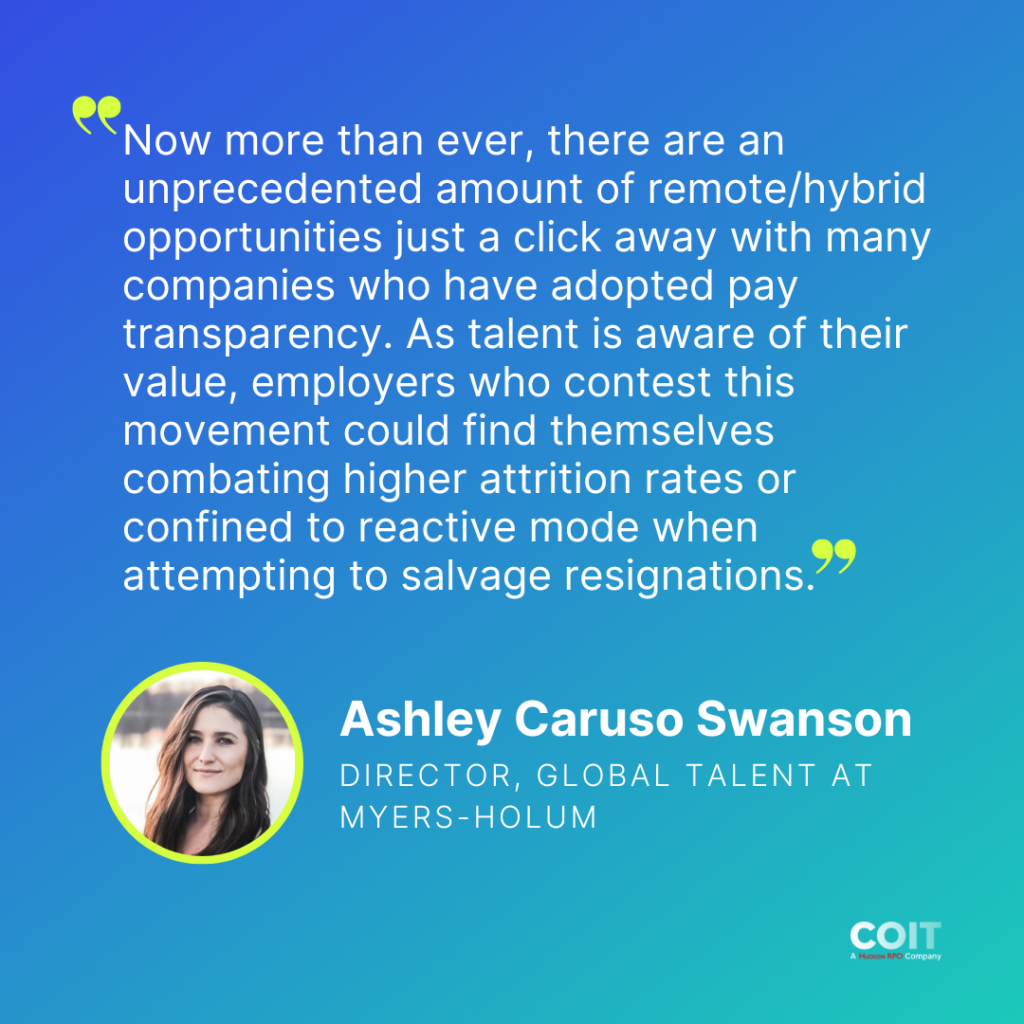


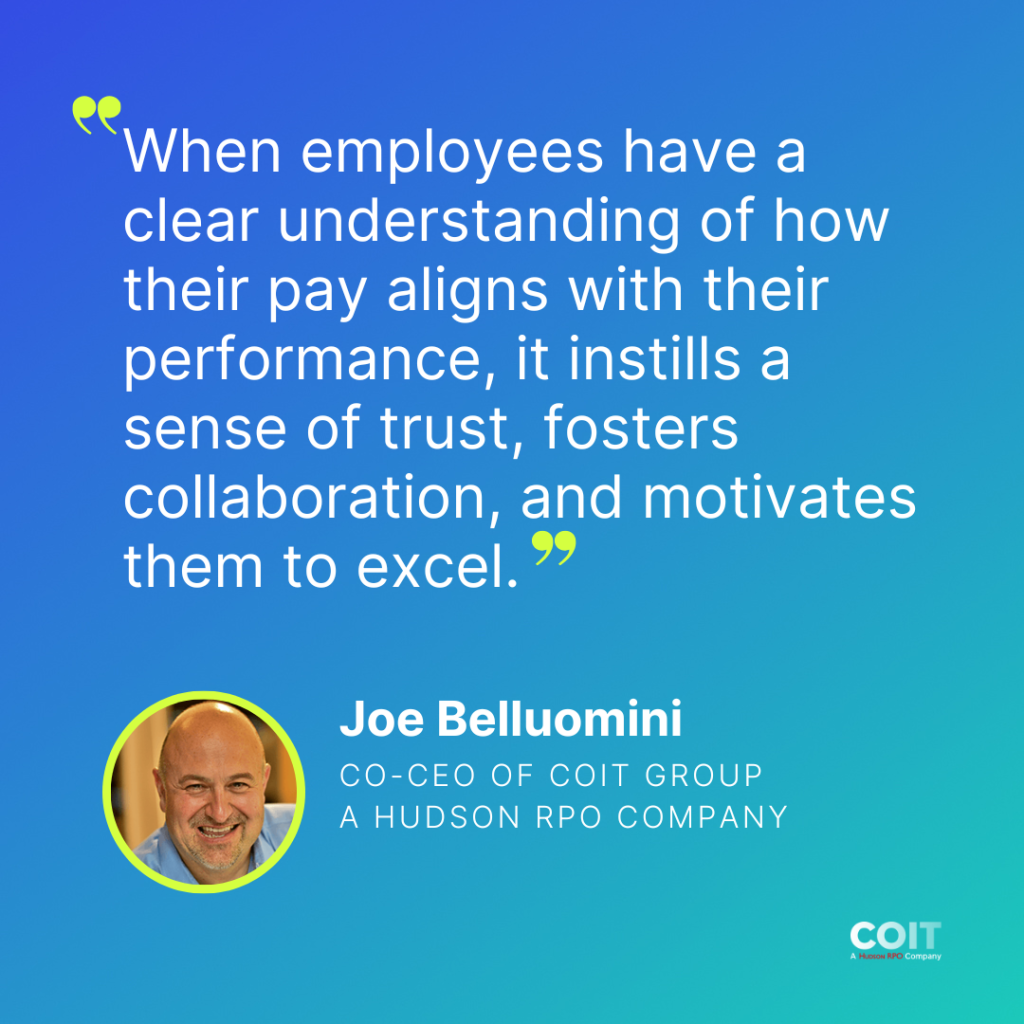
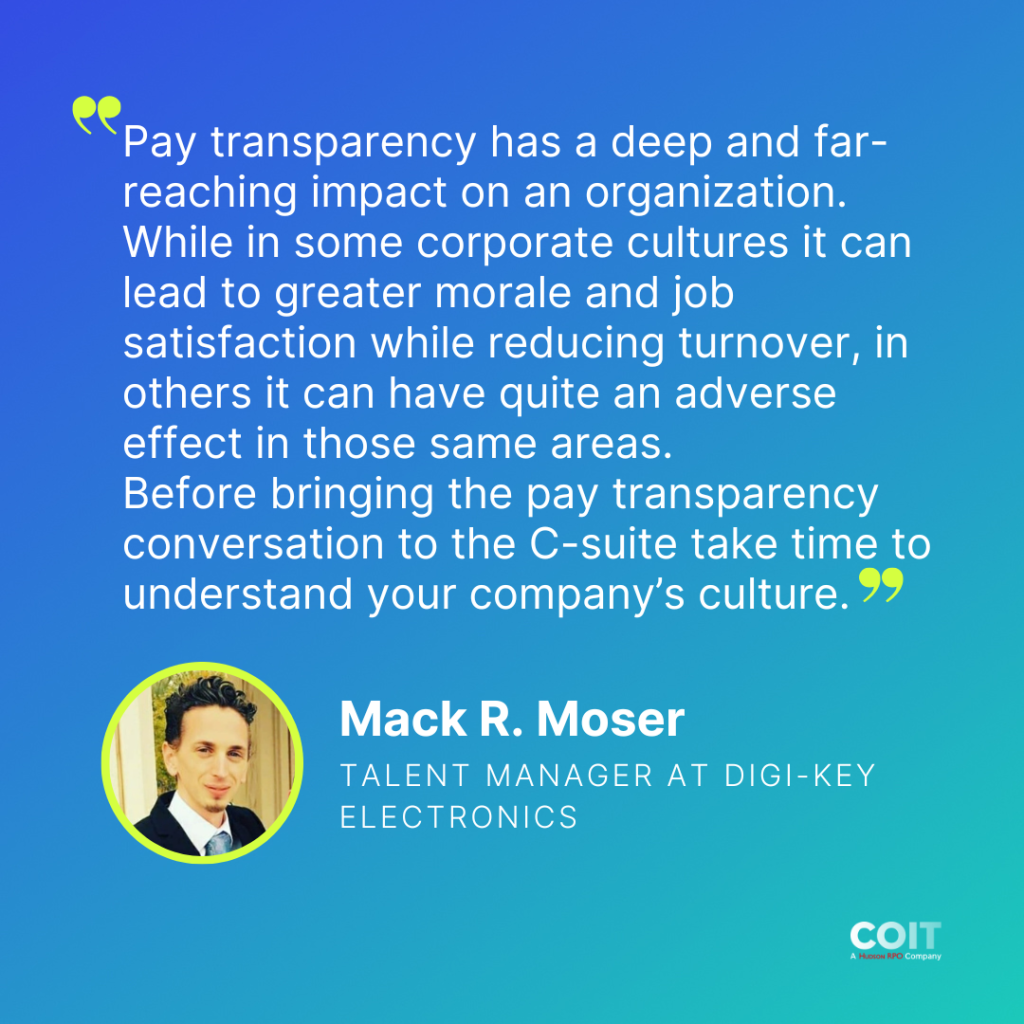
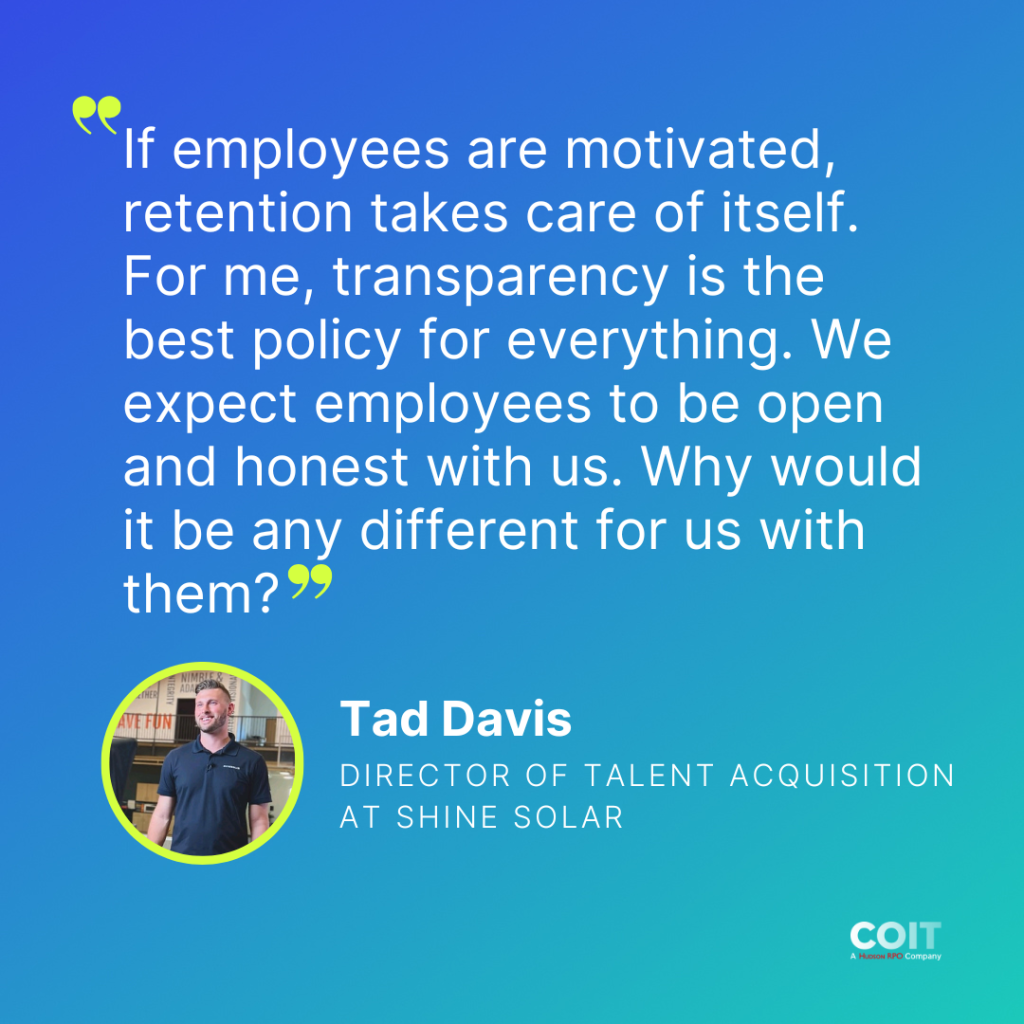

Take Small Steps
With more and more companies publishing salary information openly and publicly, pay transparency is increasingly becoming the norm, rather than the exception. As pointed out above, “Now more than ever, there are an unprecedented amount of remote/hybrid opportunities just a click away with many companies who have adopted pay transparency. As talent is aware of their value, employers who contest this movement could find themselves combating higher attrition rates or confined to reactive mode when attempting to salvage resignations…”
Fortunately, pay transparency doesn’t require radical thinking or bleeding-edge technology to implement effectively. Any company can take simple steps to be more transparent — and successful — in its recruiting and retention efforts. Understandably, it can be difficult to build pay transparency into your hiring and HR processes at first, but once you get started, you’ll find it gets easier.
Everyone starts from somewhere. Pay transparency and equity span a wide spectrum of legal requirements and best practices. The mix of solutions that you land on will change and improve over time.
In an industry that’s constantly evolving and highly competitive, companies that prioritize transparent and equitable compensation practices have the advantage. Contact us at [email protected] to learn more.
Newsletter
Blog Categories
Recent Posts

[Tech x Talent Dashboard] It’s time to change DEI metrics and tactics

3 Quick Tips to Improve Your Hiring Process

Beyond the Checkbox: DEI in 2024 and Beyond

The Unexpected Secret to Effective Rapid Response Hiring

